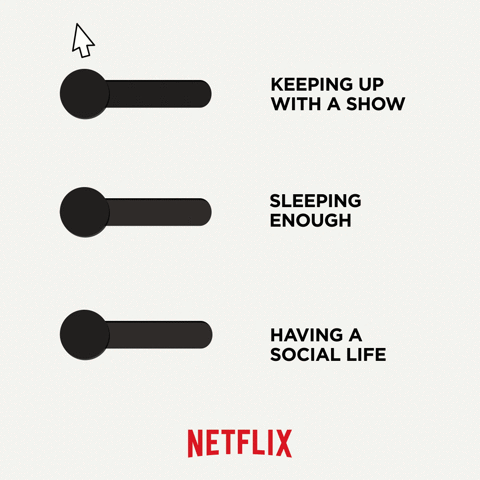
Imagine if an industry spent $4 to generate $1 in revenue. Stop imagining – this is exactly what Video On Demand streaming platforms are doing in 2022. It really is astonishing:
- Forecast VOD streaming content spend = $US230 billion
- Forecast VOD streaming revenue = $US83.4 billion
Don’t forget – this is before profit. No wonder no one can decide what to watch!
The tyranny of choice
Is content still king? My wife and I tend to perform the same ritual every night, where we take turns with the remote control to suggest shows that might entice both of us, but can never agree on one. After an hour of fruitlessly scrolling through content from four streaming platforms, we end up going to bed, having sampled an average of three minutes from six shows.
When it comes to content, we have a tyranny of riches. Netflix has even added a button that appears to prompt us, ‘Can’t decide what to watch? Play something.’
If you think this is bad for consumers, I can assure you it is much worse for companies. There are very few times in corporate history where offering more product options has performed better financially, in contrast to careful market curation. This is especially true when the company is directly making and acquiring the products. User-generated content platforms like YouTube don’t have this problem.
Market reality bites
Since its peak in late 2021, Netflix has lost US$230 billion, which is 73 per cent of its market value. It’s rare for a large market-leading firm like Netflix to suffer such a large hit. It’s another indication that we are moving from a future expectations economy to a reality economy.
Quite frankly, it is long overdue. Tech companies have been getting a free pass for a long time on their valuations. So long as they were growing, no one seemed to care about profit. We can include Tesla into this category as well. Incidentally, Telsa has lost nearly half its value since Elon Musk submitted a bid for Twitter, using his Tesla stock as security.
The streaming market is now seeing an endless slew of competitors with a deep back catalogue, deep pockets or both. Of course, this erodes Netflix’s advantage. While Netflix is planning to invest a massive US$S17 billion on original content in 2022, it’s hardly a leading position. In addition, much of its long-tail content has been removed in recent times, as its former suppliers (like NBC, Paramount and Disney) have become direct competitors.
- Apple TV is expected to spend US$7 billion this year on content
- Amazon Prime will spend US$13 billion
- Disney is investing a colossal US$33 billion to grow their bank of nearly 100 years in deep content and nostalgia
- Paramount Plus is also investing a large sum of $US15 billion in 2022
Without even considering all of the VOD platforms, it does seem like the market has got this right and is asking hard questions about the true worth of certain stocks in this and other tech sectors. All of a sudden, Netflix looks expensive and replaceable.
It is funny how often the market fails to look into simple financials until stocks start heading south.
Bonus: Speaking of Streaming, Catch up on my TV Show, The Rebound, latest ep. the Internet of Things. Tomorrow we explore Web3 – 12.30pm on Channel 9
Next-gen content
As far as entertainment goes, it is financially impossible to compete with platforms where the content is generated by users for free. YouTube, Meta platforms and TikTok have the advantage of literally billions of content producers working for free. Ironically, it’s the dream of many content producers that their work goes viral and they are eventually picked and paid to make something for a streaming platform. It’s easy to delineate that these platforms don’t compete directly, but in reality they do. They are all competing for attention. Attention is something the market can never get more of, despite the corporate investment in chasing it.
From a marketing and technological perspective, it is clear that spending more on content is not a sustainable strategy. However, it does feel like there is a shift in how content is made and consumed. For any streaming platform to stand out from the crowd, greater creativity is key. Netflix has shown signs of this via its interactive Choose Your Own Adventure storytelling – like Bandersnatch – in which viewers make decisions on how the story unfolds. Another longer-term tech possibility is deep fakes that allow viewers themselves to literally appear in the shows via face swap technology. But the leading light in the future of content is clearly TikTok. (Follow my new content experiments on Tiktok here.) TikTok has managed to launch several simple, yet insightful, innovations that allow content iterations and layering on original pieces, combining something original with crowd participation. Their first move was to grant users the ability to grab someone else’s audio, and more recently, use it in duets. This one here is a classic duet song about Crypto Kids that went super viral last week. It’s brilliant. They really have gone beyond sharing and developed a new kind of iterative layering no other channel has conceived – so simple, yet so effective.
The take out here is that consumer-driven insight and utility always beats big budgets. A lesson we need to remember when investing or building our own company.
—
Keep Thinking,
Steve




